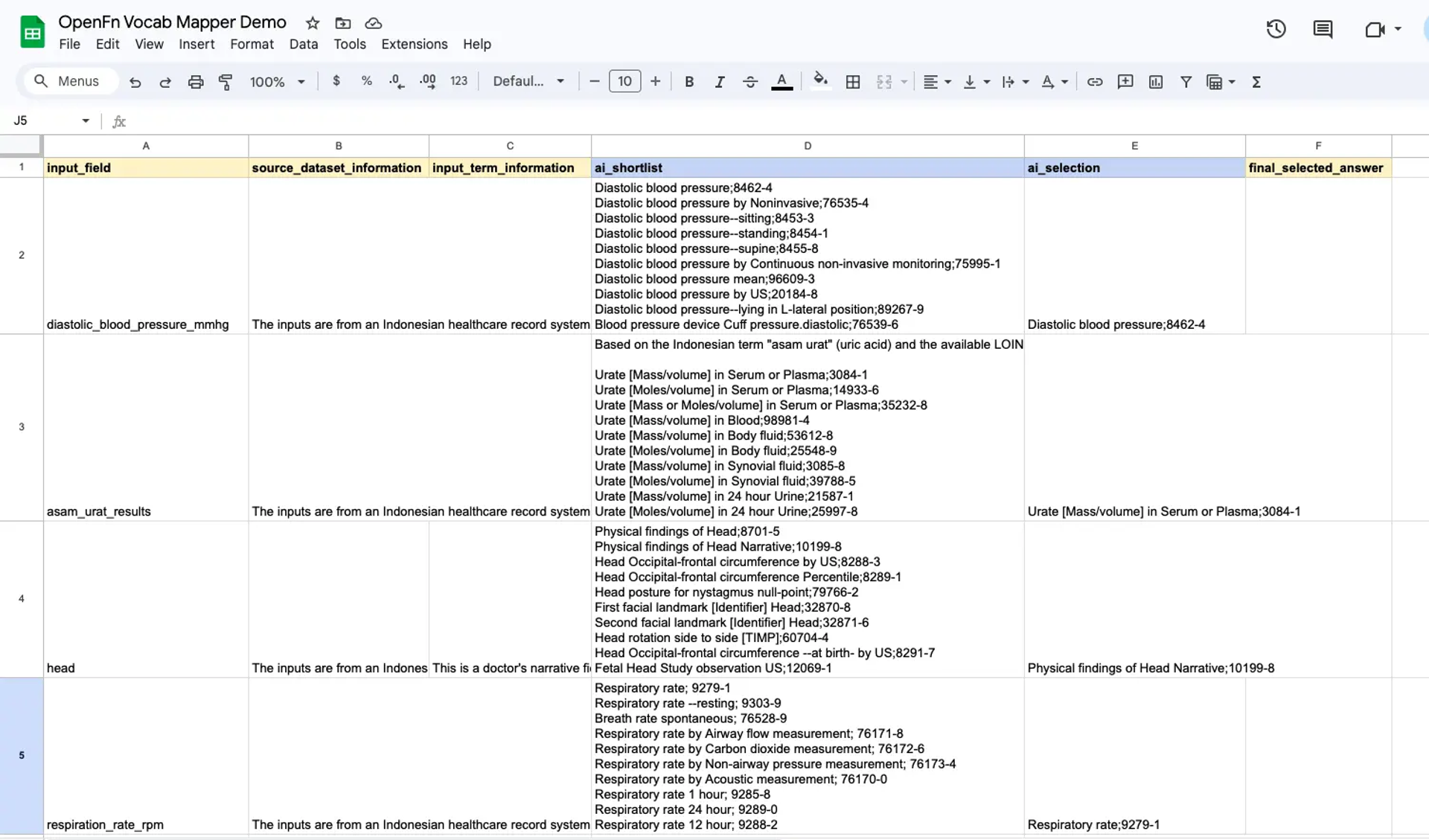Automate Data Mapping with AI-Powered Workflow Automation
Automate data mapping across sectors with AI-powered workflow automation. Streamline data interoperability and system integration at scale.
Solving Data Interoperability Challenges
Organizations across every sector face the same challenge: different systems use different terms for the same concepts. Manual data mapping between disparate data dictionaries is tedious, error-prone, and financially unsustainable at scale. When integrating data from multiple sources, teams spend countless hours comparing terminology and maintaining mapping tables.
Recently, we developed an AI-powered vocabulary mapping tool to automate this workflow. While our initial use case focused on healthcare terminology, the underlying system integration functionality has powerful applications across education, agriculture, financial services, government administration, and beyond. Check out a demo of it here!
A Human-Led AI Workflow Automation Tool
Our vocabulary mapper works through Google Sheets, making data interoperability accessible to any team. Users input their source terms alongside relevant contextual information about the dataset. The tool triggers an OpenFn workflow that populates the spreadsheet with suggested target terms and codes from your standardized data dictionary.
This approach keeps humans in control. The tool provides AI-suggested matches alongside shortlists of alternatives, allowing domain experts to quickly validate or override suggestions, or add context and iterate on the results.
Real-World System Integration Applications
Education Data Interoperability: School districts use inconsistent grade-level codes, program classifications, and demographic categories. When state agencies aggregate data from 50+ districts, the vocabulary mapper can match local terminology to standardized dictionaries like CEDS. A district's "ESL" maps to "English Language Learner Services" while another's "504 Plan" aligns with federal disability accommodation codes.
Agriculture: Cooperatives and government agencies struggle with inconsistent crop classifications. One organization's "maize" might be another's "corn" or "field corn" versus "sweet corn." The vocabulary mapper standardizes terms against FAO's agricultural classifications, enabling accurate cross-regional production comparisons and workflow automation for agricultural data systems.
Financial Services: Banks use varying transaction category schemas. One bank's "ATM withdrawal" might be another's "cash dispensing service." The vocabulary mapper aligns these classifications with standard financial taxonomies for accurate reporting and API integration across payment platforms.
Other: Get in touch with us to share the data mapping needs you see in your sector!
How AI-Powered Data Mapping Works
Our vocabulary mapper employs a multi-step workflow automation pipeline combining semantic search with AI reasoning:
- Search Optimization: Rather than directly searching with input terms, we first determine optimal search terms based on provided context. This addresses structural differences like naming conventions and the need for conceptual translation.
- Dual Search Strategy: Using optimized terms, we perform both semantic and keyword searches against your target data dictionary.
- Intelligent Filtering: Search results are processed to identify the most relevant matches based on available context.
- Validated Selection: A final step identifies the best match, presented as the primary suggestion with alternatives for expert review.
This task decomposition approach prevents AI hallucinations by grounding suggestions in real codes from your data dictionary rather than generating terms from scratch.

Streamlining Data Interoperability at Scale
This workflow automation approach transforms ongoing data dictionary maintenance. When onboarding new data sources, teams can quickly map incoming terminology to existing standards. When data dictionaries evolve, bulk remapping becomes manageable. The Google Sheets interface provides transparency, creating a clear record of mapping decisions for compliance and quality assurance.
Organizations managing multiple system integrations can maintain consistency across teams. A central data dictionary becomes the authoritative source, with the vocabulary mapper ensuring all connected systems align to the same standards through automated workflows.
Get Started with Automated Data Mapping
If you're dealing with data interoperability challenges across multiple systems, we'd be interested in hearing about your use case. Automating this process while maintaining human oversight is crucial for effective data sharing between teams, partners, and stakeholders.
Join the OpenFn community, explore our documentation, or book time with us to discuss how vocabulary mapping could support your system integration needs.
Written by
Jack Hilton